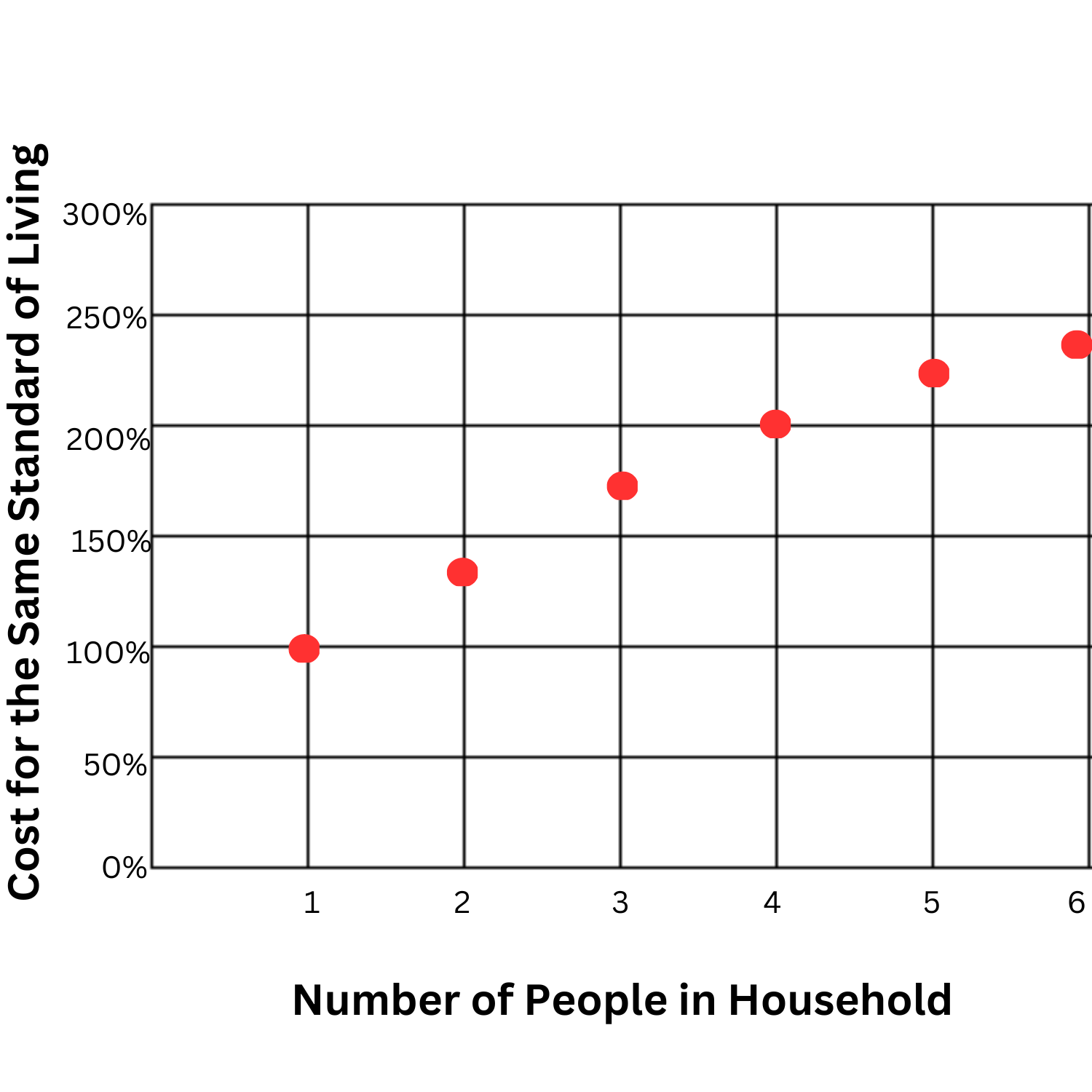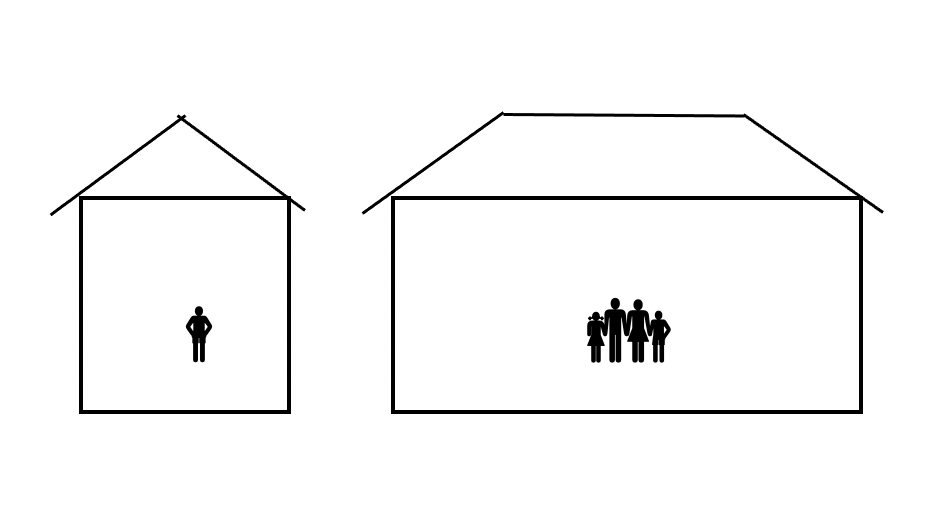If Zion Were Established In Our Time, What Would It Look Like?
Latter-day Saints believe that “Zion (the New Jerusalem) will be built upon the American continent.” Leaders have taught that Zion will feature a system of consecration and stewardship as described in the Doctrine and Covenants. Many members have wondered,
If this system were restored in our day, what would it look like?
Here are 10 ideas about how a system of consecration and stewardship would operate if Zion were established in the 21st century. This vision of Zion is called “Zion 21.0.”
Ten Ideas About Zion 21.0
1. Zion 21.0 would be based on scriptural principles, particularly those revealed in the 1830s.
2. Economic conditions have changed since the 1830s.
5. Income would be redistributed to achieve equality.
6. Equality would be adjusted for needs and circumstances.
7. Households would be equally able to own property, adjusted for needs and circumstances.
8. Members of Zion 21.0 would participate in the world economy.

1. Zion 21.0 would be based on scriptural principles, particularly those revealed in the 1830s.
In the 1830s, members joining Zion made a consecrated gift of their property to the bishop, who acted for the Church. This property became part of the storehouse of resources available to the bishop. From the storehouse, each household then received some land or other property which they were to manage as a steward. The size of each stewardship was intended to make all households equal, allowing for differences in needs and circumstances (see D&C 42:32, 51:3). The household would use the stewardship to earn a livelihood, but would give to the storehouse any part of the household’s income—what it produced and earned—above what was needed for the household’s support (see D&C 42:55).
This system has been explained many times by Church leaders and in Church classes and publications. Scholars have also described the system.

2. Economic conditions have changed since the 1830s.
Employment vs. Self-Employment.
In the United States in the 1830s, almost everyone worked for themselves or their families. Thus, a consecration and stewardship system that allocated each household the right amount of land or other property for its family business could go a long way towards providing a livelihood on an equalized basis. By contrast, workers who join Zion 21.0 would predominantly be employees who do not need to control significant amounts of property in order to work. For most members, their stewardship would be the time, energy, ability, training, and experience that they can offer to an employer in exchange for a wage or salary.
Measuring incomes. Most of the 1830s Saints would not have been accustomed to evaluating their income in dollar terms. Farmers typically sold some of what they produced, but a substantial portion was consumed by the family and never converted into money. Income did not need to be calculated for tax reasons, because no Americans paid income taxes in the 1830s. Now, nearly every household in the United States is accustomed to an annual income expressed in dollars. Zion 21.0 would be able to measure and adjust incomes directly, rather than working through allocations of property as was done in the 1830s.

3. Equality to purchase “earthly things” in pursuit of “heavenly things” would be fundamental to Zion 21.0.
Equality would be a central feature of Zion 21.0. Households would be “equal in the bonds of heavenly things, yea, and earthly things also, for the obtaining of heavenly things” (D&C 78:4-6). This means that households with the same needs and circumstances would receive the same equalized income and allocated property.
To achieve equality, Zion would need objectively determined equality levels and an organization to adjust income and property. Without specified equality levels, households would not have enough information to determine what surplus, if any, they should give away. Without an organization, households could not efficiently direct their surplus to those who should receive it. This organization might be called the Storehouse, corresponding to the storehouse in the 1830s. The bishop received consecrations into the storehouse and distributed stewardships and funds for the poor from the storehouse.

4. Zion 21.0 would not define equality to mean equalizing income opportunity or only guaranteeing a minimum income.
Neither equality of income opportunity nor guaranteeing a minimum income would be an acceptable equality standard for Zion 21.0. Neither resembles the equality in Zion described by scripture and Church leaders. Each would leave Zion members to work for their own benefit rather than working for the benefit of Zion. In addition, because so many factors affect households’ income potential, equality of income opportunity would not be attainable.

5. Income would be redistributed to achieve equality.
A household joining Zion 21.0 would consecrate two things: what it currently owns (wealth or property) and what it receives currently and in the future. Each household would report what it receives, including wage earnings and nonwage gains, to the coordinating agency in Zion, the Storehouse. The Storehouse would use information from all households to determine how much income each household should receive or retain to achieve equality. Households with the same needs and circumstances would have the same equalized income.
For some households, earnings and nonwage gains would be greater than the equalized income level. Those households would transfer to the Storehouse the surplus above their equalized income level. For other households, earnings and nonwage gains would be less than the equalized income level. These households would receive from the Storehouse a supplement to their earnings and nonwage gains, bringing their income up to the equalized income standard. The Storehouse would retain some of what is transferred for investment and to pay for Storehouse functions.

6. Equality would be adjusted for needs and circumstances.
Households in a 21st-century Zion would be equal “according to [their] circumstances and [their] wants and needs” (D&C 51:3). In the 1830s, “wants” and “needs” were two terms for the same concept. In connection with equality, “need” exists when a household seeking heavenly things requires significantly greater amounts of some good or service to obtain heavenly things than some other households. Household size is an important need factor. A “circumstance” is a condition that causes a difference in households’ ability to obtain goods and services with the same income. Cost of living and taxes are examples of circumstances. Healthcare and education involve both needs and circumstances. Incomes for Zion households should be adjusted when their circumstances and needs create inequalities that can reasonably be addressed by adjusting the income level. Some differences between households would not result in income adjustments.

7. Households would be equally able to own property, adjusted for needs and circumstances.
As in the 1830s, members joining Zion 21.0 would consecrate all they own and receive some property as a stewardship for their household. All households would receive a bank account, adjusted for need such as household size. Household would also be entitled to funds to be used for housing, vehicles, and possibly other personal property. Members may temporarily delay consecrating some property if it is not efficient to transfer it to the Storehouse when they enter Zion. Some forms of consecrated property would be retained by the Storehouse for use by the Zion community. Households that own and operate a business would normally continue to do so, subject to certain understandings.

8. Members of Zion 21.0 would participate in the world economy.
Members of Zion 21.0 would be integrated into the larger economies of the nations in which they live. Zion members would want to acquire modern goods and services that make life more agreeable and help them pursue “heavenly things.” Zion 21.0 could not reasonably produce such goods and services on its own. Belief that Zion must be totally separate from the world’s economy is misguided.

9. Most adult members of Zion 21.0 would work.
With some exceptions, adult members of Zion would be expected to work full-time. Members would be free to choose their occupation. Those entering Zion as adults would tend to stay in their previous employment path. Members who want to get advanced training would apply to the Storehouse for financial support. The Storehouse would assist unemployed members in finding work or create work opportunities where needed.

10. Zion 21.0 would be successful and sustainable.
Zion 21.0 would be the Lord’s project. It would be established with the direction of authorized servants. To be sustainable, Zion would plan for an equalized income level that can be maintained with the available resources. Zion would regulate resources and needs through controlled invitations to join Zion.
The vision of Zion 21.0 is described in greater detail in Envisioning Zion in the 21st Century by Kent Mikkelsen.

